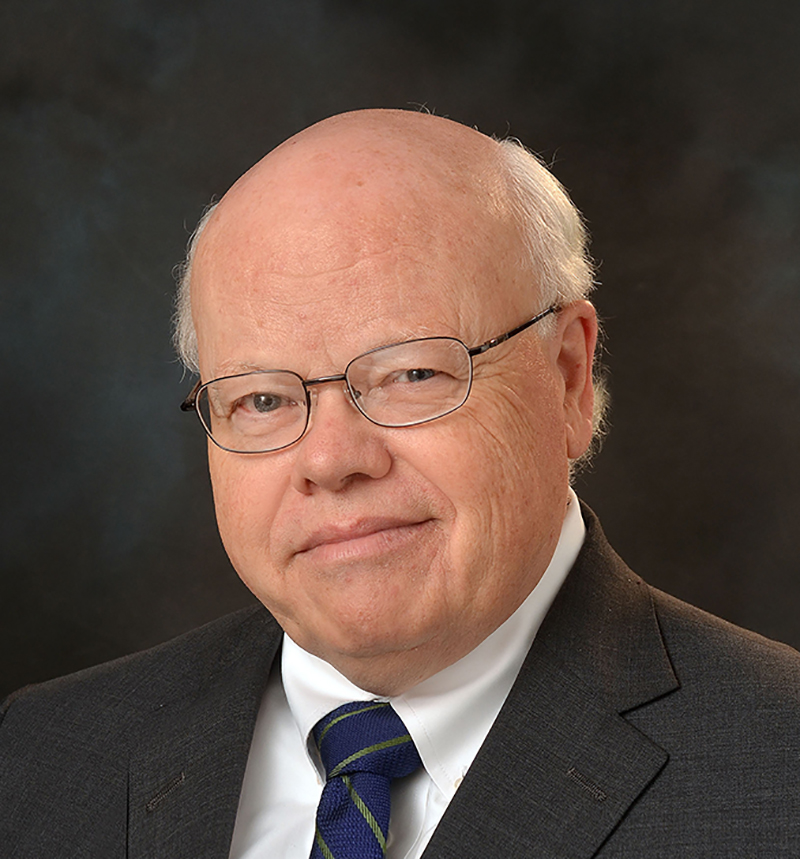‘Keeping the Lamp of Learning Burning’: Docuseries explores the perseverance and excellence in University of Akron’s 150-year history
Throughout The University of Akron’s (UA) 150-year history — including three economic depressions, an epidemic that shut down campus, a fire that destroyed its most important building and two world wars — failure was never an option for the institution of higher education.

Dave Lieberth
That theme of perseverance is unmistakably present throughout a new six-part docuseries that explores UA’s 150-year history as the “hilltop campus.” The series, “Keeping the Lamp of Learning Burning,” was written and produced by UA alumnus Dave Lieberth ‘69, ‘77, a local historian, attorney and civic activist. The series is available for viewing on UA’s sesquicentennial celebration webpage.
Over six episodes, Lieberth guides viewers on a journey through such topics as the founding of Buchtel College, the University’s precursor, by John R. Buchtel; UA’s history in innovation and the arts; traditions in campus life and athletics; and engagement with the wider community. Viewers are reminded of the University’s response in the 1960s to the upheaval of war and civil rights, how the athletic teams got the nickname “Zips,” how UA came to offer the world’s first course on rubber chemistry and the development of the University’s marching band known as “Ohio’s Pride.”
"The University of Akron’s history has always been a strong interest of mine ever since being a student there,” says Lieberth, who graduated from UA in 1969 with a bachelor’s degree in speech and later from the School of Law in 1977. “I was invited to be part of the University’s Sesquicentennial Planning Committee and was later asked if I had any interest in developing a video series on the institution’s history. I jumped in with both feet and started drafting a list of topics that eventually turned into six episodes.”
Researching the past
During a six-month span, Lieberth researched 15 decades of history through more than 20 books written about UA and the Akron community, several periodicals, newspaper articles and videos, many of which are located in Archival Services of University Libraries. Much of the information used in the docuseries was recorded by the late George W. Knepper, Ph.D., distinguished professor of history emeritus at UA, in his book, “New Lamps for Old: One Hundred Years of Urban Higher Education at The University of Akron.”

Lieberth’s exploration tells the story of how tuition at Buchtel College was just over $32 when the first courses were offered in 1872. In those earliest days, students came by foot, horseback and train from all over rural Ohio. The first University sport was baseball and the first contest was organized by nine men who could only afford one ball. The series addresses the perpetual underfunding of the school over 150 years, how Buchtel College became the Municipal University of Akron and, in 1969, how it advanced to become a state-funded institution. The growth of the institution is demonstrated by how what was once farmland became The University of Akron and went from teaching 50 students in 1872 to educating nearly 20,000 today.
Lieberth also discovered a second theme that has remained constant in the University’s long history.
“There has always been excellence on The University of Akron campus,” says Lieberth. “That was true in 1872 when the first courses were offered, and that’s true today. There are ‘pockets’ of excellence that are nationally and internationally recognized, such as the School of Polymer Science and Polymer Engineering and the University’s School of Music. People come from all over the world to be a part of The University of Akron’s programs.”
Producing the docuseries
As Lieberth spent every day over a six-month period researching the University’s history, two UA departments helped bring the docuseries and Lieberth’s 15,000-word script to life through additional research and video production.
Vic Fleischer, university archivist and head of Archival Services, and his staff in Archival Services of University Libraries helped train two sesquicentennial interns who were hired to assist with the research for this project and provided unfettered access to the department’s robust collections on University and local history.
The interns, Rose Stull, who graduated from UA last year with a bachelor’s degree in history, and Katelynn Olsen, a fourth-year art history major, spent more than two months gathering 640 archival photos, many of them being original images that had to be digitized, along with other information and documents from Archival Services that appear in the series. The team also reviewed Lieberth’s script for historical accuracy and assisted with some of the filming.
Jamie Newhall, a senior multi-media producer for Instructional Services of University Libraries, filmed Lieberth at locations around the UA campus and edited the series, including adding archival interviews with renowned members of the UA community, including Frank N. Kelley, Ph.D., the first dean of the then College of Polymer Science and Polymer Engineering; the late Norman P. Auburn, former University president; and the late John F. Seiberling, a former School of Law faculty member.
Music for the docuseries was arranged and performed by Theron Brown, who received his Bachelor of Music degree in 2013 from UA.
Media contact: Alex Knisely, 330-972-6477 or aknisely@uakron.edu.
